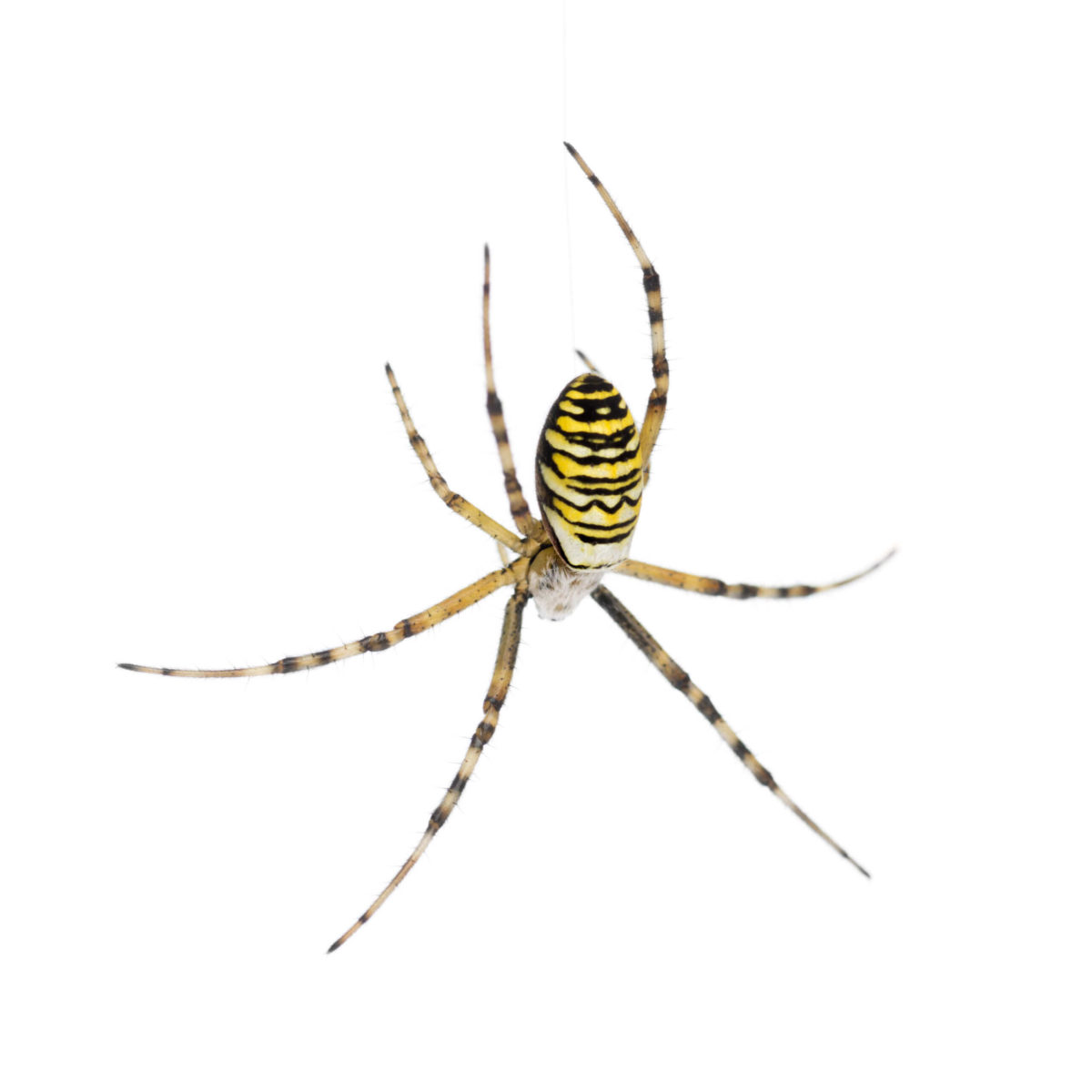Let’s dive into a topic that might make your skin crawl but is crucial for any Missouri homeowner to understand: spiders. Missouri is home to a diverse array of spider species, some beneficial and others potentially harmful. You should be able to differentiate between ones dangerous to pets and people and those that are unharmful. Let’s explore seven common types you might encounter in the Show-Me State.
1. Brown Recluse
Description:
The Brown Recluse is perhaps the most infamous spider in Missouri. Recognizable by its violin-shaped marking on the cephalothorax, this spider prefers dark, undisturbed areas.
Habitat:
You might find them in basements, closets, and even within shoes or folded clothes. Outdoors, they hide under rocks or in woodpiles.
Risk:
Their bite can cause severe skin necrosis and systemic symptoms. Medical attention is often necessary if bitten.
2. Black Widow
Description:
The Black Widow is notorious for its shiny black body and distinctive red hourglass marking on the underside of its abdomen.
Habitat:
They typically dwell in undisturbed, cluttered areas such as garages, sheds, and woodpiles.
Risk:
Their venom is potent, causing severe pain and muscle cramps, though fatalities are rare. Immediate medical treatment is recommended if bitten.
3. Wolf Spider
Description:
Wolf spiders are large, robust, and hairy, often mistaken for tarantulas. They are fast movers and hunt their prey rather than spinning webs.
Habitat:
Commonly found in gardens, grasslands, and homes, they seek shelter under rocks, leaves, and within gaps and crevices.
Risk:
While intimidating, wolf spiders are not aggressive, and their bites are typically harmless, resulting in mild irritation.
4. Jumping Spider
Description:
Jumping spiders are small, with excellent vision and distinctive jerky movements. They come in various colors and patterns, often with a compact body and short legs.
Habitat:
These spiders are often seen indoors on windowsills, walls, and ceilings, as well as outdoors on plants and fences.
Risk:
Jumping spiders are harmless to humans and are more likely to flee than bite when disturbed.
5. Orb Weaver
Description:
Orb weavers are known for their intricate, wheel-shaped webs. They vary greatly in size and color, often with a bulbous abdomen.
Habitat:
These spiders prefer outdoor locations, building webs in gardens, forests, and near lights where they can catch flying insects.
Risk:
Orb weavers are non-aggressive and beneficial for controlling insect populations. Their bites are rare and harmless.
6. Grass Spider
Description:
Grass spiders have a distinctive funnel-shaped web and a brownish body with two dark stripes running down their cephalothorax.
Habitat:
They are commonly found in lawns, gardens, and fields, where their funnel webs are spread across grass and shrubs.
Risk:
Grass spiders are shy and rarely bite humans. Their venom is not harmful to people.
7. Common House Spider
Description:
The common house spider is small, with a tan to brown coloration and various patterns on its abdomen.
Habitat:
As their name suggests, they are often found indoors in corners, basements, and crawl spaces, as well as in outbuildings and barns.
Risk:
These spiders are not dangerous to humans and help control insect pests within the home.
Get Help with Spider Infestations
Understanding the types of spiders common in Missouri can help you identify them and decide when to take action. While most spiders are harmless and beneficial, reducing their numbers in your living space can improve comfort and peace of mind. If you encounter an unwanted eight-legged guest, Bug-A-Way Pest Control is here to help. Our team of experts can safely and effectively manage spider populations in and around your home.
